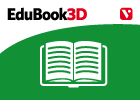Cargando...
Recursos educativos
-
Nivel educativo
-
Competencias
-
Tipología
-
Idioma
-
Tipo de medio
-
Tipo de actividad
-
Destinatarios
-
Tipo de audiencia
-
Creador
Lo más buscado
- Letras Z
- Juegos matemáticos
- Actividades educativas para niños
- Descargar ejercicios de matemáticas
- Recetas para niños
- Astros del planeta tierra
- Canciones en inglés
- Proyectos cientificos caseros
- Uso de c, s y z
- El Alto Imperio romano
- Guía interactiva de minerales
- multiplicación para niños
- Descargar ejercicios de geometría
- Capitales del Mundo
- Aprender a cantar
-

Medieval cities - Medieval Cities
EduBook Organización
- 7045 visitas
The origin of medieval cities From the 11th century, there were fewer invasions. As a result, new population centres began to appear. They grew near abbeys, castles and existing villages. These urban…
-

Entry test 04 - The Roman Empire
EduBook Organización
- 6414 visitas
Answer the following questions: What were the barbarian invasions? What effect did the invasions have on the Roman Empire? Where did each barabarian tribe establish a new kingdom? What aspects of the…
-

Check. The Spanish economy in the late 19th century
EduBook Organización
- 6029 visitas
Remember what you have studied in this section and answer the questions: What were the causes of the 'agrarian crisis' of the late 19th century in Europe? What was phylloxera and what industry…
-

Final self-evaluation 3.07 - Medieval Cities
EduBook Organización
- 5601 visitas
Which of the following statements are true or false?: In the cities, the artisans of each profession were grouped into guilds. A new social class, the bourgeoisie, emerged in the new urban society. The…
-

Final self-evaluation 10.10 - The Baroque Age
EduBook Organización
- 5415 visitas
Match the sentences with the correct theme: England and the Netherlands open up new Atlantic and Indian routes. The redrawing of Europe's political map, the consolidation of nation-states and…
-

Check. Asexual reproduction in plants
EduBook Organización
- 1 lo usan
- 5158 visitas
Remember what you have studied in this section and answer the questions: In asexual reproduction, what does the new plant look like? Which organs do plants use to reproduce asexually? Which types of…
-

Final self-evaluation 8.10 - The Great Geographical Discoveries
EduBook Organización
- 4987 visitas
Rewrite the following sentences and correct the mistakes: New tools, such as the rudder, compass and anchor, allowed ships to be sailed better. Christopher Columbus knew that the Earth was flat. Once…
-

Gothic art
EduBook Organización
- 4645 visitas
5.1. New architecture Beginning in the 14th century, taller, lighter buildings became popular. This led to a new style of art called Gothic art. In cities, many Gothic buildings began to be constructed,…
-

Summaries - Medieval Cities
EduBook Organización
- 4047 visitas
1. The return of urban life From the end of the 11th century, Western Europe experienced an increase in agricultural production, produced by the decrease in wars and invasions, and by advances in…
-

Sexual reproduction in animals
EduBook Organización
- 3939 visitas
2.1. How do animals reproduce sexually? In sexual reproduction in animals, a new organism is created by the union or fertilisation of two gametes from individuals of different sexes. This type of…
Te estamos redirigiendo a la ficha del libro...












